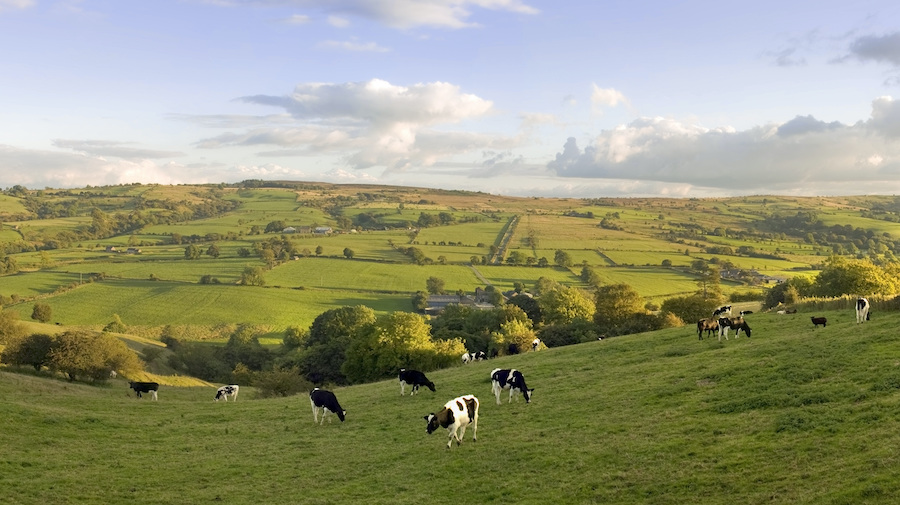Everything we know about farming schemes in 2024
15th January 2024
The government has announced a series of updates to the ELM schemes for this year, including additional support for tenants, upland farmers and grassland. Here, we outline the key updates from the government…

Environment secretary Steve Barclay announced a series of updates to the Agricultural Transition Plan at the start of the year, which Defra describes as the biggest upgrade to farming schemes since leaving the EU.
Defra has since announced further detail on the new additions.
By the end of 2025 to 2026 it says it will take forward twice the number of Higher Tier type agreements than it does now, a move that has been welcomed by James Robinson, Cumbrian organic farmer and chair of the Nature Friendly Farming Network England.
He spent months last year campaigning for greater access to these schemes, noting that over the past decade, successful applications plummeted by 80%.
Key additions to the 2024 offer
Steve Barclay announced the following changes for the 2024 farming schemes:
- A 10% increase in the average value of agreements in the Sustainable Farming Incentive and Countryside Stewardship this year
- Around 50 new actions that farmers can get paid for
- It’s now possible to apply for both the SFI and CS Mid Tier in a single application
- Premium payments will be available for actions with the biggest environmental impact or combinations of actions that deliver benefits at scale
- Farmers will also be paid more for existing actions to maintain habitats
- More ‘maintenance’ actions to reward farmers who are already protecting the environment, for example through maintaining grasslands, wetlands and scrub.
Support for tenant farmers
Tenant farmers, which manage a third of all farmland in England, can face additional barriers when accessing environmental schemes. Farming organisations have long lobbied for the government to ensure funding schemes are inclusive of tenant farmers.
Penalties are no longer applicable for tenants who have to exit a scheme early if their tenancy ends unexpectedly.
Additionally, the SFI does not require the tenant to gain landlord consent to enter into a scheme, though tenants should check the terms of their tenancy agreement before applying. In the spirit of collaboration, tenants should communicate with their landlord about the SFI activities they will carry out.
Three-year agreements under the SFI is in line with the average length of farm business tenancies, to allow tenants to apply, the government said.
The government is working with the new joint Defra/industry Farm Tenancy Forum to consider when landlord consent might be needed, for example if a permanent land use change is reuqired.
From there, Defra will introduce 16 new actions with a three-year duration, and is exploring whether it can offer another 41 existing CS actions of three-year duration, making them more accessible to tenant farmers in 2024.
Addressing concerns about landlords taking land out of tenancy agreements Defra said it is working with the forum to monitor the situation.
Changes to the upland offer
The government has developed five new actions to reward actions taken in moorland settings. For example, the ‘low grazing on moorland’ action pays farmers to maintain low livestock density on moorland, aiming to support and enhance moorland habitat.
Farmers can choose between three ranges of livestock density. The action offers a premium payment applied for those with either low or limited grazing on moorland.
There is also a new action for managing non-peat moorland soils for flood and drought resilience, to help retain water in the uplands by slowing the flow of surface run-off.
Changes to payments include stepped payment rates for grazing actions to reflect the costs incurred by moorland farmers. Stepped payments also allow farmers to choose actions that work for their business, Defra said.
The government is looking to introduce new additional capital items for wildfire management and for people to map their moorlands, identifying sensitive habitats and features, for better planning of grazing and restoration works.
New grassland offer
Historically the government paid much higher prices for the creation or restoration of habitats and features – and lower prices for maintenance.
The payments for creation and maintenance are now being rebalanced, particularly for grassland habitats, so that those who have already made changes are not disadvantaged.
For example, as of 1st January 2024, the price for maintaining species rich grassland increased from £182 to £646 per hectare.
Moving forward, the government will pay for the cost of creating a grassland habitat in full, up front, as a separate capital grant offer, so it can increase regular payments.
Visit the Defra farming blog for full details.
